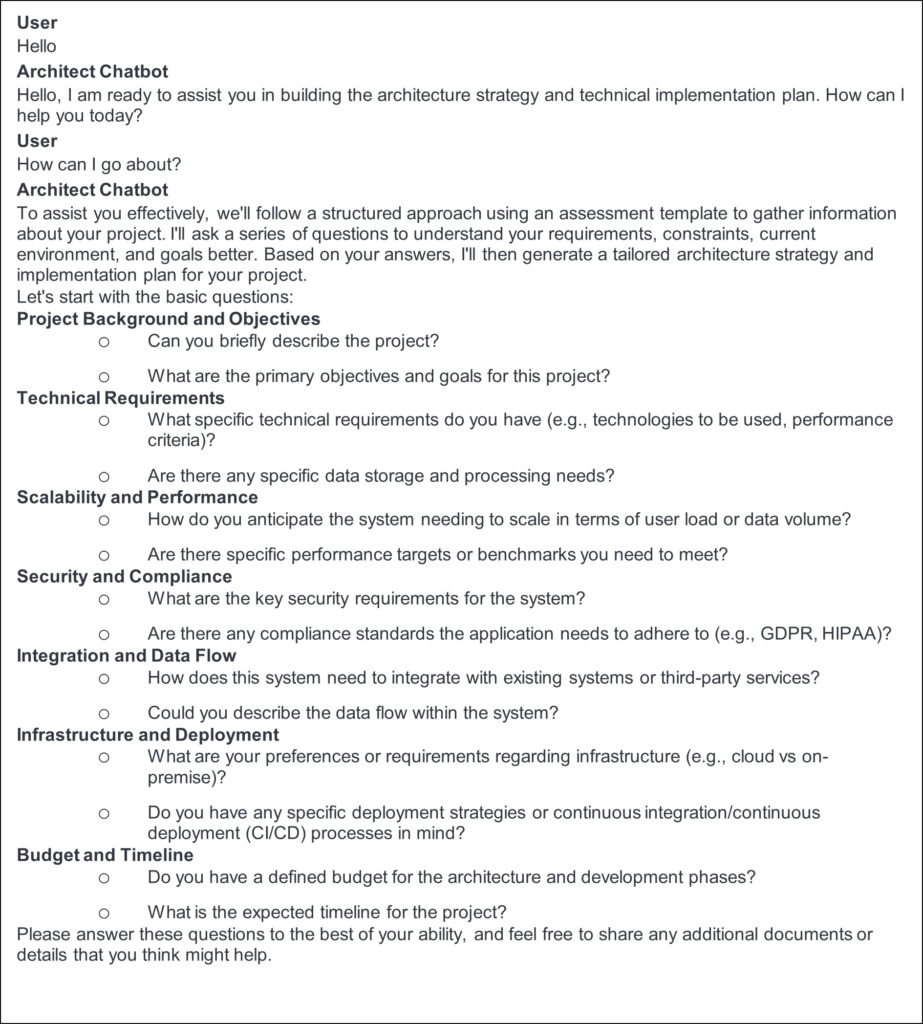Note: This is a guest blog post by Srini Chevuru. Srini is a Senior Technology Architect at Infosys, where he collaborates with clients to design and implement cloud-native applications using advanced cloud technologies and distributed architectures. An AI enthusiast, Srini is currently pursuing an AI Technology and Implementation program from eCornell and has completed the AI Awareness and Builder program from Infosys. In his spare time, he enjoys developing AI prototypes.
The rapid advancement of Generative AI (Gen AI) is transforming various industries, with one of the most prominent applications being the enhancement of productivity through AI-powered assistants, often referred to as co-pilots. From publishing and sales to healthcare and customer service, professionals across diverse fields are harnessing the potential of these cutting-edge tools. As the adoption of Gen AI accelerates, it is crucial to explore how this technology can revolutionize the Software Development Life Cycle (SDLC) and empower software architects to deliver innovative solutions more efficiently.
Automation in SDLC
The Software Development Life Cycle (SDLC) encompasses a wide range of labor-intensive tasks, spanning from requirement gathering to product deployment. The quest to automate and streamline these processes is a constant pursuit, aiming to expedite the delivery of high-quality software products. Gen AI holds immense promise in making this vision a reality by augmenting the productivity of key stakeholders throughout the SDLC. From product owners and analysts to architects, developers, and DevOps engineers, AI-powered tools can significantly enhance efficiency and reduce cycle time, ultimately enabling organizations to stay ahead in the competitive landscape of software development.
AI Chatbot as An Architect Assistant
Software architects play a pivotal role in bridging the gap between business objectives and technical implementation. They possess a deep understanding of business vision, goals, and requirements, which they translate into robust software system designs. Architects adhere to established processes, standards, and principles to create artifacts that elucidate system building blocks, design, and data flow. Ensuring system reliability, scalability, security, and data integrity is of utmost importance, while navigating complex regulatory, legal, and environmental considerations. Given the multifaceted nature of software architecture, a comprehensive understanding of various aspects of the system and its operational environment is essential. This is where an AI assistant can prove invaluable, guiding architects through the architectural process and offering support by reviewing artifacts for clarity and consistency.
Example
Consider a scenario where a specially tailored AI assistant, such as OpenAI’s ChatGPT-4.0, aids an architect in evolving a system design. The AI assistant can engage in a dialogue with the architect, asking probing questions to elicit key requirements and constraints. It can suggest design patterns and best practices based on the specific context, helping the architect make informed decisions. The assistant can also analyze the proposed architecture, identifying potential bottlenecks, security vulnerabilities, or scalability issues. By providing real-time feedback and recommendations, the AI assistant empowers the architect to refine the design iteratively, ensuring a robust and optimized system architecture.
The chatbot can use templates to guide the conversation with the architect. Based on these templates, the chatbot can help evolve the architecture strategy and technical implementation. Once all information is provided, the chatbot will generate an Architecture Strategy and Implementation document. From there, the chatbot and architect can also develop high-level designs, including user interface design, database design, and infrastructure design, based on other templates. Throughout the process, the chatbot ensures the design adheres to the company’s technology strategy, architecture principles, and standards.
Example User and Chatbot Conversation:

Example Architecture Strategy and Implementation Document:

Conclusion
The integration of AI into software architecture holds immense potential to revolutionize the way software systems are designed and developed. By leveraging AI-powered tools, architects can enhance their productivity, ensure system reliability, and meet the stringent demands of modern software development. The symbiotic relationship between human expertise and AI capabilities promises a future where software architecture is not only more efficient but also more innovative. As organizations like Infosys embrace the concept of AI First Software Engineering, the power of AI in the SDLC becomes increasingly evident. By harnessing platforms like Infosys’ Topaz, organizations can unlock new possibilities and drive transformative change in the realm of software architecture.









